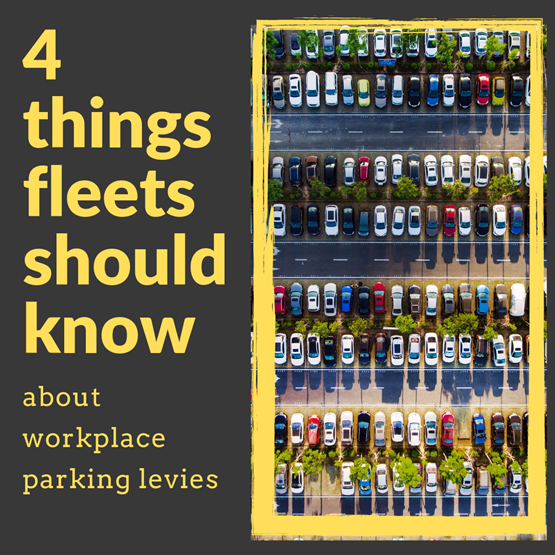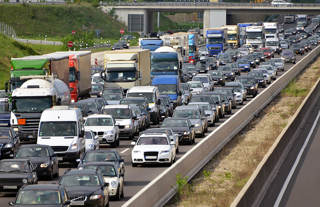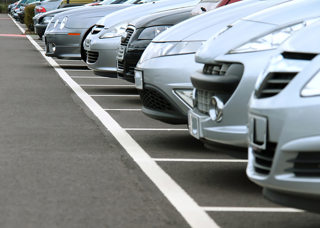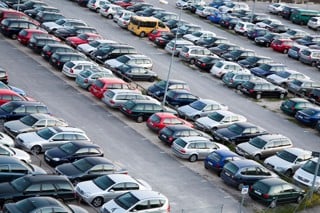This editorial feature appears in the March, 28 2019 issue of Fleet News and is sponsored by The AA and Goodyear

Seven years after Nottingham City Council introduced the UK’s first – and only – workplace parking levy (WPL), the introduction of similar charges is now on the agenda for a number of other local authorities.
Councils in Edinburgh and Glasgow plan to go ahead with a similar charge, while Reading, Oxford, Bristol, Cambridge and the London boroughs of Merton, Brent and Camden are at the consultation stage.
“It is essentially a tax on something that nobody likes – congestion,” says Anthony Breach, analyst at research and policy institute Centre for Cities, which is dedicated to improving the economic success of UK cities.
“By encouraging commuters to car pool or switch to public transport, it reduces congestion and its costs to businesses and residents.
“The reduction in traffic also improves carbon emissions and air quality.”
Under the Transport Act 2000, local authorities in England and Wales, with sign off from the Secretary of State, have been able introduce a parking levy licensing scheme on employers, which requires them to pay a charge for each parking space they provide to employees.
Although this Government bill did not cover Scotland, local authorities there can now introduce them under amendments to the Transport (Scotland) Bill agreed between the Scottish Government and Scottish Greens as part of a budget deal earlier this year.
In all cases, WPL revenue is ring-fenced by law and has to be spent on transport initiatives contained within the local authority’s local transport plan.
Nottingham’s charging scheme, which began in April 2012, has seen use of public transport soar in the city, helped cut CO2 emissions, and constrained congestion growth.
While details of other WPL schemes have not been released, here we look four things fleet decision-makers can learn from Nottingham’s experience.
1. Not all organisations and vehicles face the charge
Under Nottingham’s scheme, a number of organisations and vehicles are exempt from paying the WPL, which will be £415 per space for the 2019/20 tax year.
These are employers with 10 or fewer spaces, while there is also a 100% discount given to emergency and NHS frontline services, as well as bays occupied by vehicles used by disabled blue badge holders.
“Fleet vehicles which aren’t used for commuting are outside the scope of the levy – they are not even required to get a licence,” says Nigel Hallam, WPL service manager at Nottingham City Council.
“For example, Nottingham City Council has a fleet of, say 100 bin lorries, that might be working all day, but as they are not taken home by employees at the end of the day they are completely exempt.
“If, however, you have employees who drive vans and take them home each night and then bring them back in, they are contributing to congestion, so those fleet vehicles will be subject to the levy because the levy, fundamentally, is a congestion charge.”
The exemptions mean 75%-to-80% of employers do not pay the levy.
Nottingham City Council figures show the number of liable workplace parking places decreased by 17.5% from just more than 33,000 prior to the WPL being introduced as employers sought to limit their liability, or introduced parking management schemes that passed on the cost to employees.
2. Employers can pass on the cost of the levy to employees
While the charge is payable by the employer, they are able to pass on all or some of the cost to employees.
Research by Nottingham City Council found that 53% of organisations who have to pay the WPL do pass the charge on in some way to employees, with Hallam saying this probably includes eight out of the 10 largest employers in the city.
“Others have said for example if, as a factory, we hit our carbon emission target this year we will pay the cost of the levy and won’t pass the cost on to employees,” he says.
When the scheme was introduced, Imperial Tobacco offered to pay the cost of the parking levy for those employees who carried out unpaid charity work wearing tabards with their employer’s logo on.
“That was good PR for Imperial Tobacco and a great many of its staff did that,” says Hallam. “Some employers have just passed on the cost, and Nottingham City Council is one of those.
“We have a car park management scheme where our over-riding principle is that if you park on council premises then that is your choice and you will pay for the privilege of doing so because Nottingham has a good public transport offering.
“We have a slightly cheaper tariff in the areas which are not so well served by public transport.”
The WPL also allows the local authority to spend £250,000 each year to support employers to better manage commuter travel through travel planning and parking management
Around one-third of large employers now have travel plans, while they can also take their own action to help employees. For example, E.on promotes car-sharing at its sites in the city, including through the use of:
- Priority parking for vehicles carrying at least one passenger.
- A car-sharing register on the company’s intranet to make it easier to match lift offers and requests.
- A special rate negotiated with a local bus company for employees.
3. WPL led to a surge in the number of commuters using public transport
During the life of Nottingham’s scheme, the council expects to raise an average £12 million each year, with the WPL designed to raise less in the early years and more in the future.
The WPL has helped Nottingham bring in funding to more than double the size of its tram network through a £570 million extension, carry out a £60m redevelopment of the city’s railway station, and support its Link bus network.
Hallam says a number of major employers such as VF and Experian also opted to move into, or consolidated to, city centre locations with good public transport links to remove the need for the provision of parking as well as to improve accessibility.
These measures have helped increase the proportion of people travelling by public transport in the morning by 2%, meaning – for the first time – more than 40% of commuters now use it.
Loughborough University research found that 8.6% of commuters who either cycled or used public transport in Greater Nottingham said the WPL and the package of measures it has funded played an important part in their decision to switch from the car.
“The two new tramlines are now carrying 20 million passengers a year,” adds Hallam. “We have seen a modal shift where 20% of people who used their cars are now using the trams.”
Hallam says the WPL also allows the council to offer a number of grants to employers. “We have a cycling structure grant which employers can apply for if they want a cycle rack, or infrastructure around cycling, such as showers or drying cabinets, and we put about £100,000 aside each year for that,” he adds.
4. WPL has positively impacted congestion and air quality
The objective of Nottingham’s WPL was not to reduce congestion, but to constrain the growth of it, as a city that does well is almost certainly going to have a degree of congestion.
Hallam says: “Nottingham’s objective was to reduce the growth in congestion from 15% to 8% by 2021, and although it is still relatively early days, research shows it looks like it has been successful.”
Loughborough University research found that from July 2015, congestion rose less in Nottingham than the average of four comparable English cities (Newcastle, Liverpool, Sheffield and Leicester) and, at 2.1% it was 0.7 percentage points lower than the country as a whole.
The WPL package of measures also helped Nottingham beat a CO2 reduction plan well ahead of its target. It had aimed to reduce carbon emissions by 26% by 2020 compared with 2005 levels, but in 2016 the council announced they were already 33% below that level. However, the scheme does have its critics.
“Nottingham City Council will tell you (WPL) has led to it achieving its clean air goals four years ahead of schedule, but it would be wrong to think it had improved traffic around the city,” says Andy Hibberd, media and communications manager at East Midlands Chamber.
“Nottingham’s trams are quite good today, but it still takes an hour to drive the six miles to the motorway in the evening rush and it’s now almost impossible to find parking spaces at park-and-ride stations of the periphery of the centre.
“The city centre might have achieved clean air goals, but it is possibly because the congestion has been moved to suburbs.”






















rosco7 - 09/04/2019 10:59
The scheme in Nottingham is not as successful as is being portrayed in this article. They put the scheme in to pay for a tram line out to Clifton, not accounting for the fact that only the residents of Clifton could possibly benefit from it. But most commuters were coming from places like Derby, Loughborough or Newark so have no practical alternative. The company I worked for, were south of Trent Bridge, no public transport alternatives, so effectively a tax. Cost Nottingham dearly though. Many businesses moved as soon as their leases expired, Derby and Leicester go the benefit in the main. Others went out to Ruddington or Donnington. Some bigger businesses simply doubled the size of the parking bays (like a disabled or parent and child space) and then allowed people to squeeze together. It probably would work for genuinely city centre offices, but they got greedy and extended into areas with little public transport, unless you wanted a very long and complicated bus journey. Despite the costs, a congestion style charge would be better, fairer and more effective.